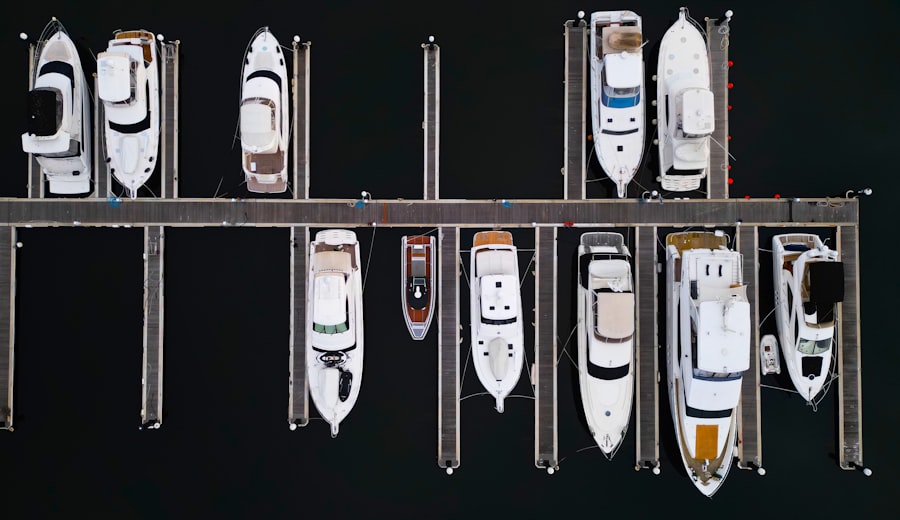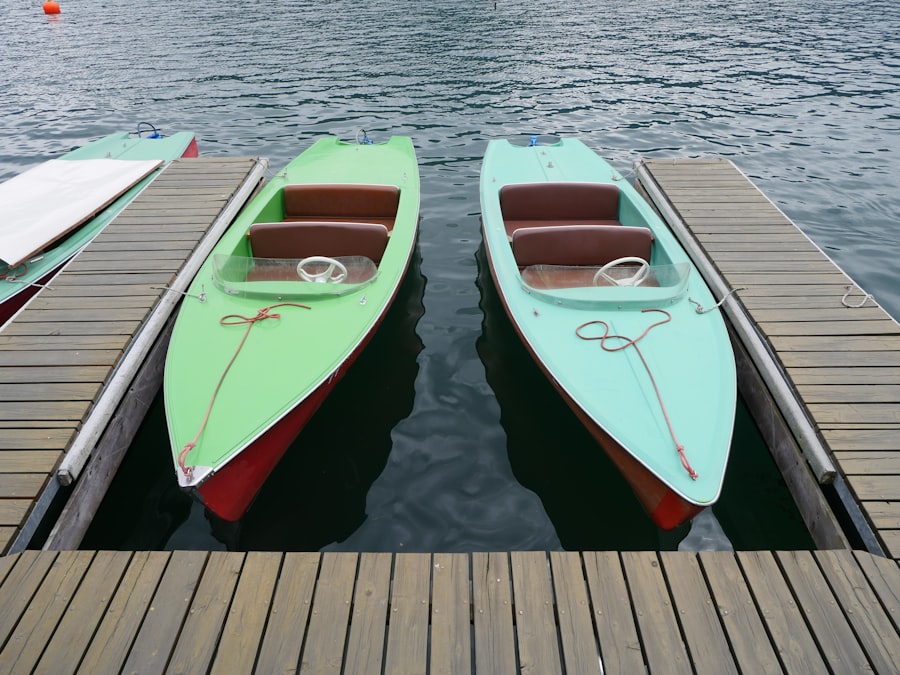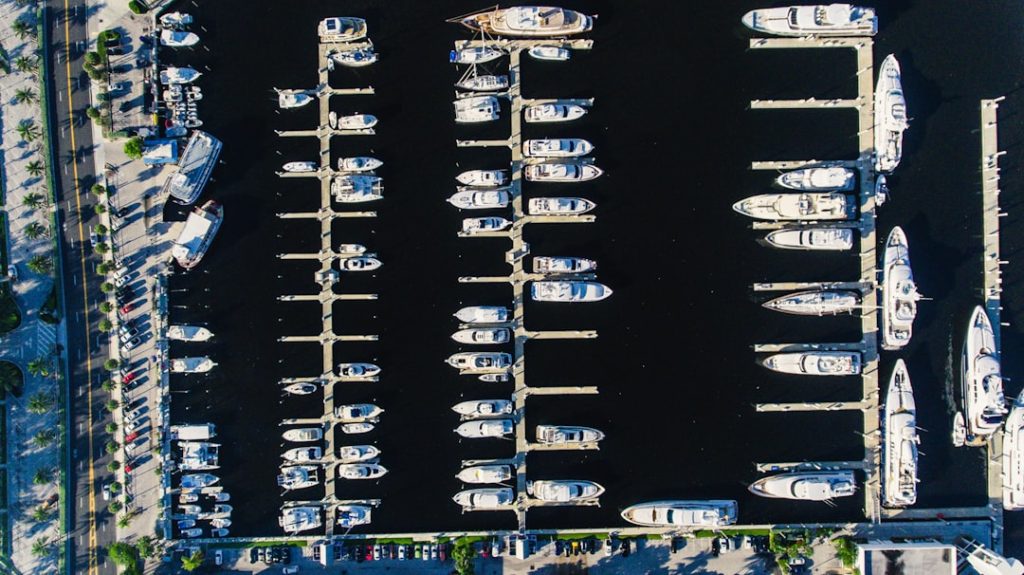Purchasing a second-hand boat can be an incredibly rewarding experience, both financially and in terms of the opportunities it presents for adventure on the water. One of the most significant advantages of buying a used boat is the cost savings. New boats depreciate rapidly, often losing a substantial portion of their value within the first few years.
By opting for a second-hand vessel, buyers can often acquire a boat that is only a few years old at a fraction of the original price. This financial advantage allows enthusiasts to invest in additional gear, upgrades, or even save for future trips. Moreover, the market for second-hand boats is vast and varied, offering a plethora of options that cater to different preferences and needs.
Whether one is looking for a small fishing boat, a luxurious yacht, or a sturdy sailboat, the second-hand market is likely to have something that fits the bill. This diversity not only provides buyers with more choices but also allows them to find a boat that has already been tested and proven in real-world conditions. Many used boats come with a history of maintenance and repairs, giving potential owners insight into their reliability and performance.
Key Takeaways
- Buying second hand boats offers cost savings and access to a variety of models.
- Popular sources for second hand boats include online marketplaces, dealerships, and boat shows.
- Key considerations include boat condition, history, and suitability for intended use.
- Inspecting the boat thoroughly before purchase helps identify potential issues and avoid costly repairs.
- Proper maintenance and care are essential to extend the lifespan of a second hand boat.
Where to Find Second Hand Boats for Sale
Finding second-hand boats for sale can be an exciting treasure hunt, as numerous platforms and venues cater to this niche market. One of the most traditional methods is to visit local marinas and boatyards, where many owners choose to sell their vessels directly. These locations often have bulletin boards or listings where sellers can post advertisements.
Engaging with the local boating community can also yield valuable leads, as word-of-mouth recommendations frequently lead to hidden gems that may not be listed online. In addition to physical locations, the internet has revolutionized the way buyers search for second-hand boats. Websites dedicated to boat sales, such as Boat Trader, YachtWorld, and Craigslist, provide extensive listings that can be filtered by type, price range, and location.
Social media platforms also play a role in connecting buyers and sellers; groups dedicated to boating enthusiasts often feature posts from individuals looking to sell their boats. Online auctions and classified ads can also present unique opportunities to find a second-hand boat at a competitive price.
Things to Consider When Buying a Second Hand Boat

When embarking on the journey of purchasing a second-hand boat, several critical factors must be taken into account to ensure a wise investment. First and foremost is the intended use of the boat. Buyers should clearly define their primary purpose—whether it’s fishing, cruising, or water sports—as this will significantly influence the type of vessel they should consider.
Understanding how often and in what conditions the boat will be used can help narrow down options and avoid potential pitfalls. Another essential consideration is the boat’s condition and maintenance history. A well-maintained boat can provide years of enjoyment, while one that has been neglected may lead to costly repairs down the line.
Buyers should inquire about any past accidents or significant repairs and request documentation of maintenance records. Additionally, it’s crucial to assess whether the boat has been stored properly during off-seasons, as improper storage can lead to various issues such as mold growth or structural damage.
The Different Types of Second Hand Boats Available
| Type of Boat | Common Uses | Average Length (ft) | Typical Price Range | Condition Factors to Consider |
|---|---|---|---|---|
| Fishing Boats | Freshwater and saltwater fishing | 16 – 25 | 5,000 – 30,000 | Engine hours, hull integrity, electronics |
| Sailboats | Recreational sailing, racing | 20 – 40 | 10,000 – 50,000 | Sail condition, rigging, hull condition |
| Speedboats | Water sports, cruising | 18 – 30 | 8,000 – 40,000 | Engine performance, upholstery, hull scratches |
| Houseboats | Living aboard, extended stays | 30 – 60 | 20,000 – 100,000 | Plumbing, electrical systems, structural integrity |
| Pontoon Boats | Leisure cruising, parties | 16 – 30 | 7,000 – 35,000 | Deck condition, motor hours, upholstery |
| Kayaks & Canoes | Recreational paddling, fishing | 10 – 18 | 500 – 3,000 | Hull cracks, seat condition, paddle quality |
The second-hand boat market is rich with diversity, offering various types of vessels that cater to different activities and preferences. Among the most popular categories are powerboats, which include everything from small runabouts to larger cabin cruisers. Powerboats are favored for their speed and ease of use, making them ideal for day trips or water sports like wakeboarding and waterskiing.
Buyers interested in recreational fishing may gravitate towards center console boats or bass boats designed specifically for angling. Sailboats represent another significant segment of the second-hand market, appealing to those who appreciate the art of sailing and the tranquility it offers. From small dinghies perfect for beginners to larger yachts equipped for extended voyages, there is a wide range of options available.
Additionally, there are specialized vessels such as catamarans and trawlers that cater to specific needs—catamarans provide stability and space for family outings, while trawlers are designed for long-distance cruising with comfort in mind.
How to Inspect a Second Hand Boat Before Buying
Conducting a thorough inspection of a second-hand boat is paramount before finalizing any purchase. A comprehensive evaluation should begin with an exterior examination of the hull for any signs of damage or wear. Look for cracks, blisters, or discoloration that may indicate underlying issues.
Pay close attention to the condition of the gel coat and any visible hardware; corrosion or rust can signal neglect or exposure to harsh conditions. Moving inside the boat, potential buyers should inspect the interior for signs of water damage or mold growth. Check all compartments for leaks and ensure that all systems—such as plumbing, electrical, and navigation—are functioning correctly.
It’s also wise to assess the condition of upholstery and flooring; worn-out materials may need replacement soon after purchase. If possible, bringing along a marine surveyor can provide an expert opinion on the boat’s condition and help identify any hidden problems that may not be immediately apparent.
Tips for Negotiating the Price of a Second Hand Boat

Negotiating the price of a second-hand boat can be an art form in itself, requiring both preparation and strategy. Before entering negotiations, it’s essential to conduct thorough research on comparable models in similar condition to establish a baseline price range. Understanding market trends and knowing what similar boats are selling for can empower buyers during discussions with sellers.
When engaging in negotiations, it’s crucial to approach the conversation with confidence but also with respect for the seller’s position. Start by expressing genuine interest in the boat while highlighting any concerns discovered during inspections; this can create an opening for price adjustments based on necessary repairs or maintenance. Additionally, being willing to walk away if the price does not meet expectations can often prompt sellers to reconsider their stance and make concessions.
The Process of Transferring Ownership of a Second Hand Boat
Transferring ownership of a second-hand boat involves several steps that ensure both parties are protected throughout the transaction. The first step typically includes drafting a bill of sale that outlines key details such as the purchase price, boat identification number (VIN), and any included accessories or equipment. This document serves as proof of ownership transfer and should be signed by both the buyer and seller.
In many jurisdictions, it’s also necessary to complete registration paperwork with local authorities or maritime agencies. This process may involve submitting forms along with proof of ownership documentation and payment of any applicable fees. Buyers should verify whether there are any outstanding liens on the vessel that could complicate ownership transfer; ensuring that all financial obligations are settled before completing the sale is crucial.
Maintaining and Caring for a Second Hand Boat
Once ownership has been successfully transferred, maintaining and caring for a second-hand boat becomes paramount to ensuring its longevity and performance. Regular maintenance routines should include checking fluid levels—such as oil and coolant—and inspecting all mechanical systems before each outing. Keeping up with routine maintenance not only enhances safety but also preserves the vessel’s value over time.
Additionally, proper storage practices play a significant role in maintaining a second-hand boat’s condition. During off-seasons or periods of inactivity, it’s essential to store the boat in a dry environment protected from harsh weather elements. Covering the boat with a high-quality tarp or shrink wrap can prevent damage from UV rays and moisture accumulation.
Regular cleaning—both inside and out—will help prevent mold growth and keep surfaces in good condition, ensuring that every trip on the water remains enjoyable and trouble-free.


